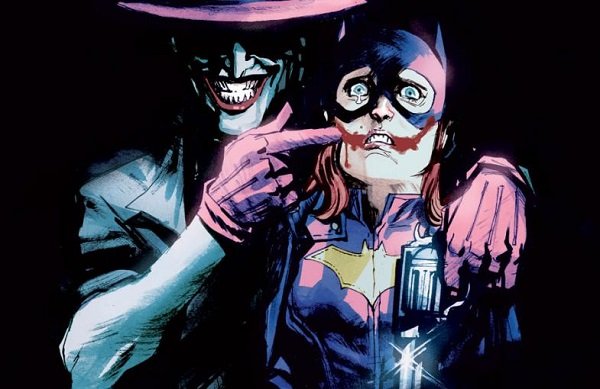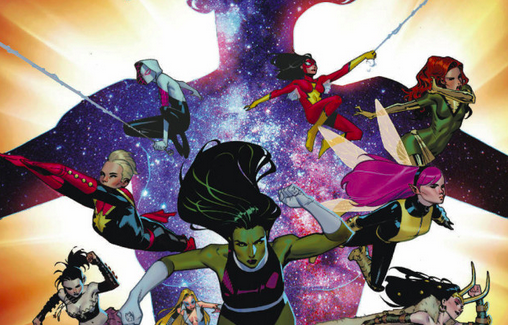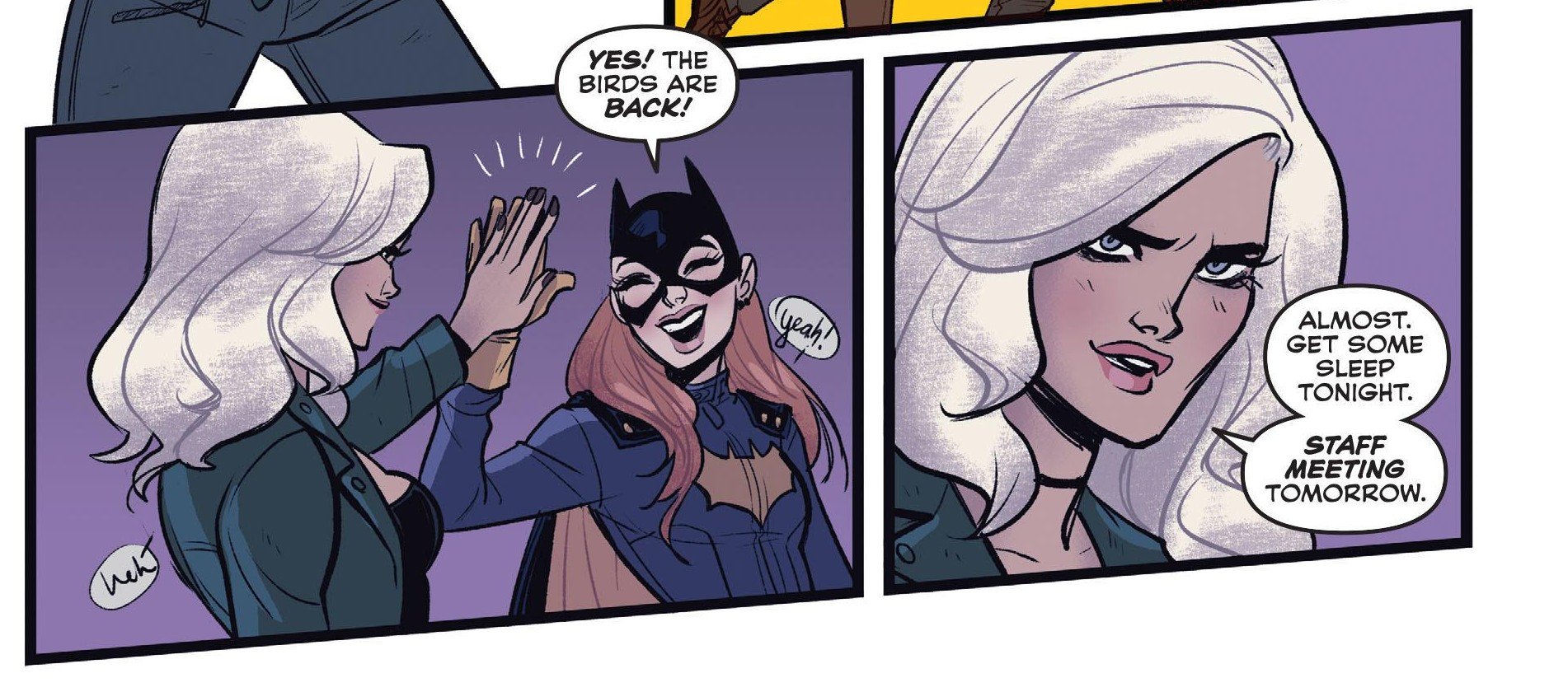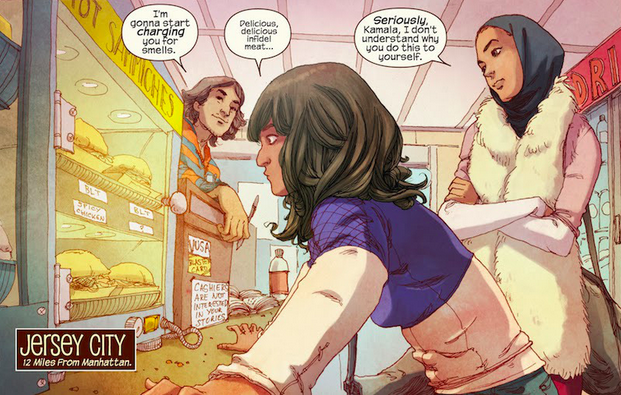Comically Underserved: Why Women in Comics Are More Important Than Ever
Comics analysis site Graphic Policy says 53% of comic readers are women, which is a 40% jump from 2011. It's no secret that girls read comics, but it's taken the industry a long time to believe it.In the 1940s, comic book publishers began catering to female readership with romance anthologies. Marvel saw success with its long-running campaign, Girl Comics, but interestingly, the issues incorporating suspenseful murder storylines sold even more copies than stories about getting engaged or going to prom.
That is to say, even in the 40s and 50s, girl readers were more likely to buy titles like "The Man Who Followed" and "Death Plunge" than "Going Steady" or "We Both Loved Jerry!" (Those are all actual Girl Comics titles, by the way.)
In the period nerds tend to call the “Bronze Age of Comics”, publishing companies fumbled to address feminism in superhero stories. Wonder Woman gained popularity, but she was joined on the stage by female characters who hated men: Thundra and Man-Killer. Female superheroes were often motivated by rage and physically resembled their male counterparts: swollen with muscles and scowling.
Later, Wasp (who made a new debut in Marvel's summer film Ant-Man) joined the Avengers, and Storm materialized as a part of the X-Men. Ironically, comic book theorists attribute the rise in female superheroes to male artist and comics creator Chris Claremont. In fact, many characters from this era are still referred to as the "Claremont Women": Kitty Pryde, Rogue, Spiderwoman and the original Ms. Marvel.
The Bronze Age ended in a moment of violence: in Alan Moore's The Killing Joke, the Joker shot Barbara Gordon, friend to Batman and daughter to Commissioner Gordon, shattering her spine. It was the gunshot heard 'round the city of Gotham, and comics fans were stunned.
After the attack, Barbara Gordon became something else: a signifier for what women in comics were capable of. In the comics that followed The Killing Joke, Barbara was no longer simply an associate of Batman. Using her analytical skills and connections to Gotham's underworld, Barbara became Oracle, the head of the all-female crime-fighting force Birds of Prey. A new age for women had arrived.
Of course, contemporary comics continued to employ sexist plot devices during this culture shift, though fans have become less tolerant. When artist Rafael Albuquerque's 2015 variant cover was released depicting the Joker abducting a crying Batgirl, fans were so outraged that the cover was cancelled.
In the last several years, Marvel, DC and indie publishers like Image have seen astounding success with female-centric comics. Storylines in which women are active players have vastly out-sold primarily male stories; in 2015, Marvel's female Thor blew the original Thor's sales out of the water, and the success of Carol Danvers as Captain Marvel and her Banshee Squad made the original, male Captain Marvel look obsolete. These characters are effective crime-fighters, but they're also girlfriends, wives, mothers, students and mentors. They're powerful without being hateful, they crave intimacy without being sexual objects, and they each value some aspects of classic femininity while rejecting others.
Following the success of these characters, Marvel released A-Force, its first all-female team of Avengers. The group is led by She-Hulk (who, fun fact, is a lawyer), and features classic female superheroes like Storm, Jean Grey, a female-presenting Loki and Captain Marvel, as well as teenaged heroes Dazzler, Pixie, and Sister Grimm.
DC's Batgirl moved from downtown Gotham (escaping the watchful eye of the oppressive Batman), and found an apartment in Gotham's hip border district Burnside (think Bushwick), where she began attending Burnside College and coding dating apps by day. Also in Burnside, Batgirl's former roommate, Black Canary, fights demons and fronts a hardcore band.
2015's real darling, however, is the new iteration of Ms. Marvel, Kamala Khan. The Muslim teenager from New Jersey was an immediate fan favorite following her first issue, and her story hailed praise from readers and critics alike. Al-Jazeera America called Kamala "a window into the American Muslim experience."
For fans of alternative comics, Image has been churning out fantastic female-driven stories, including Rat Queens, about a team of foul-mouthed, drug-abusing female Dungeons and Dragons-esque warriors, Pretty Deadly, a feminist western, and Bitch Planet, a sci-fi series set on a planet housing non-compliant female prisoners.
Image's comics employ more challenging and rebellious feminist tropes for several reasons. First, the publishing house isn't as constrained by having to pay fan service to old favorites. Though Marvel's Thor: Goddess of Thunder experienced early blowback from skeptics, it seems readers of all genders enjoy sex-positive, foul-mouthed Fiona of Image's Saga.
Second, Image comics are much more likely than DC or Marvel to employ female writers and artists to oversee their issues. When women are in control of their own stories, female characters become more complex, flawed, and interesting. Stand-out women in comic creation include Fiona Staples (Saga), Gail Simone (Birds of Prey, Batgirl), G. Willow Wilson (Ms. Marvel) and Kelly Sue DeConnick (Captain Marvel, Bitch Planet, Pretty Deadly).
TV and film adaptations have a long way to go if they're going to catch up to 2015's feminist comic book renaissance. Though CBS will bring Supergirl to life in her own TV show, the promotional trailer suggest Supergirl's primary problems will be designing a cute costume and relating to other, male superheroes. Even Suicide Squad's Harley Quinn, typically terrifying in comics, spends most of the film's trailer licking her lips and making cute comments. The newer, fresher group of female superheroes to be featured in 2016's X-Men: Apocalypse, including a young Mystique (Jennifer Lawrence), Psylocke (Olivia Munn), Jean Grey (Game of Thrones' Sophie Turner), Storm (Alexandra Shipp) and Jubilee (Lana Condor), could be promising, just by virtue of being played by talented, multi-dimensional actresses.
Female readers who crave female characters with more grit will have to be content with male-driven movies and keep buying our comics, written for us and/or by us, until something changes.








